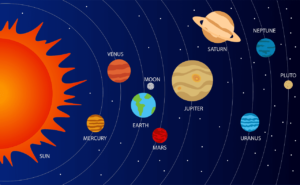Since the dawn of the space age, reaching the Moon has been one of humanity’s greatest achievements. Several countries have made significant strides in lunar exploration, contributing to our understanding of Earth’s closest celestial neighbor. This comprehensive guide details the countries that have reached the Moon, their missions, and the technological advancements that made these journeys possible.
1. United States of America
NASA’s Apollo Program:
- Overview: The United States, through NASA, has been the most prominent player in lunar exploration, with its Apollo program being the first and only program to send humans to the Moon.
- Key Missions:
- Apollo 11 (1969): The first manned mission to land on the Moon. Astronauts Neil Armstrong and Buzz Aldrin walked on the lunar surface while Michael Collins orbited above.
- Apollo 12 (1969): The second manned mission to the Moon, which included extensive scientific experiments.
- Apollo 14 (1971): Featured the first use of the Modular Equipment Transporter (MET) for geological sampling.
- Apollo 15 (1971): The first mission to use the Lunar Roving Vehicle (LRV) for exploration.
- Apollo 16 (1972): Conducted extensive geological surveys.
- Apollo 17 (1972): The final Apollo mission, which included the first scientist-astronaut, Harrison Schmitt.
Robotic Missions:
- Ranger Program: Provided the first close-up images of the lunar surface.
- Surveyor Program: Conducted soft landings and analyzed the Moon’s surface.
2. Soviet Union (Russia)
Luna Program:
- Overview: The Soviet Union conducted numerous unmanned missions to the Moon under the Luna program.
- Key Missions:
- Luna 2 (1959): The first human-made object to impact the Moon.
- Luna 3 (1959): Took the first photographs of the far side of the Moon.
- Luna 9 (1966): Achieved the first successful soft landing on the Moon.
- Luna 16 (1970): Successfully returned lunar soil samples to Earth.
- Luna 17 (1970): Deployed the Lunokhod 1, the first robotic rover on the Moon.
- Luna 24 (1976): The last Soviet mission to return lunar samples.
Current Efforts:
- Luna-Glob and Luna-Resurs: Future missions planned by Russia to explore the Moon further and possibly establish a lunar base.
3. China
China National Space Administration (CNSA):
- Overview: China has made significant advancements in lunar exploration with its Chang’e program.
- Key Missions:
- Chang’e 1 (2007): Orbital mission that mapped the Moon’s surface.
- Chang’e 2 (2010): Orbital mission that conducted detailed surface imaging.
- Chang’e 3 (2013): Successfully landed the Yutu rover, marking China’s first soft landing on the Moon.
- Chang’e 4 (2019): The first mission to land on the far side of the Moon, deploying the Yutu-2 rover.
- Chang’e 5 (2020): Successfully returned lunar samples to Earth, the first such mission since 1976.
Future Missions:
- Chang’e 6, 7, and 8: Planned missions aimed at further exploration and potential establishment of a research base on the Moon.
4. India
Indian Space Research Organisation (ISRO):
- Overview: India has also made significant strides in lunar exploration with its Chandrayaan program.
- Key Missions:
- Chandrayaan-1 (2008): Orbital mission that provided evidence of water molecules on the Moon.
- Chandrayaan-2 (2019): Aimed to land a rover on the Moon. While the orbiter was successful, the lander unfortunately crashed during the descent.
Future Missions:
- Chandrayaan-3: Planned mission to achieve a successful landing on the Moon.
5. European Space Agency (ESA)
Collaborative Efforts:
- Smart-1 (2003): ESA’s lunar orbiter that tested new propulsion technology and conducted scientific research on the Moon’s surface.
Future Plans:
- Participation in Artemis: ESA is collaborating with NASA on the Artemis program, which aims to return humans to the Moon and establish sustainable exploration by the late 2020s.
6. Japan
Japan Aerospace Exploration Agency (JAXA):
- Overview: Japan has contributed to lunar exploration through its Kaguya (SELENE) mission.
- Key Missions:
- Kaguya (SELENE) (2007): Orbital mission that conducted detailed mapping and scientific research on the Moon.
Future Missions:
- SLIM (Smart Lander for Investigating Moon): Planned mission to demonstrate precise landing techniques and conduct lunar exploration.
Conclusion: A Global Effort in Lunar Exploration
The journey to the Moon has been a collaborative effort involving multiple countries and space agencies. Each mission has contributed to our understanding of the Moon, paving the way for future exploration and potential colonization.
Key Takeaways:
- The United States and the Soviet Union were pioneers in lunar exploration, with the US achieving the first manned landings.
- China, India, ESA, and Japan have made significant contributions with their robotic missions, enhancing our knowledge of the Moon.
- Future missions from these countries and potential new entrants promise to continue the legacy of lunar exploration, focusing on sustainability and long-term presence.
Understanding the history and achievements of lunar exploration not only highlights human ingenuity and curiosity but also sets the stage for future advancements in space exploration and technology.















